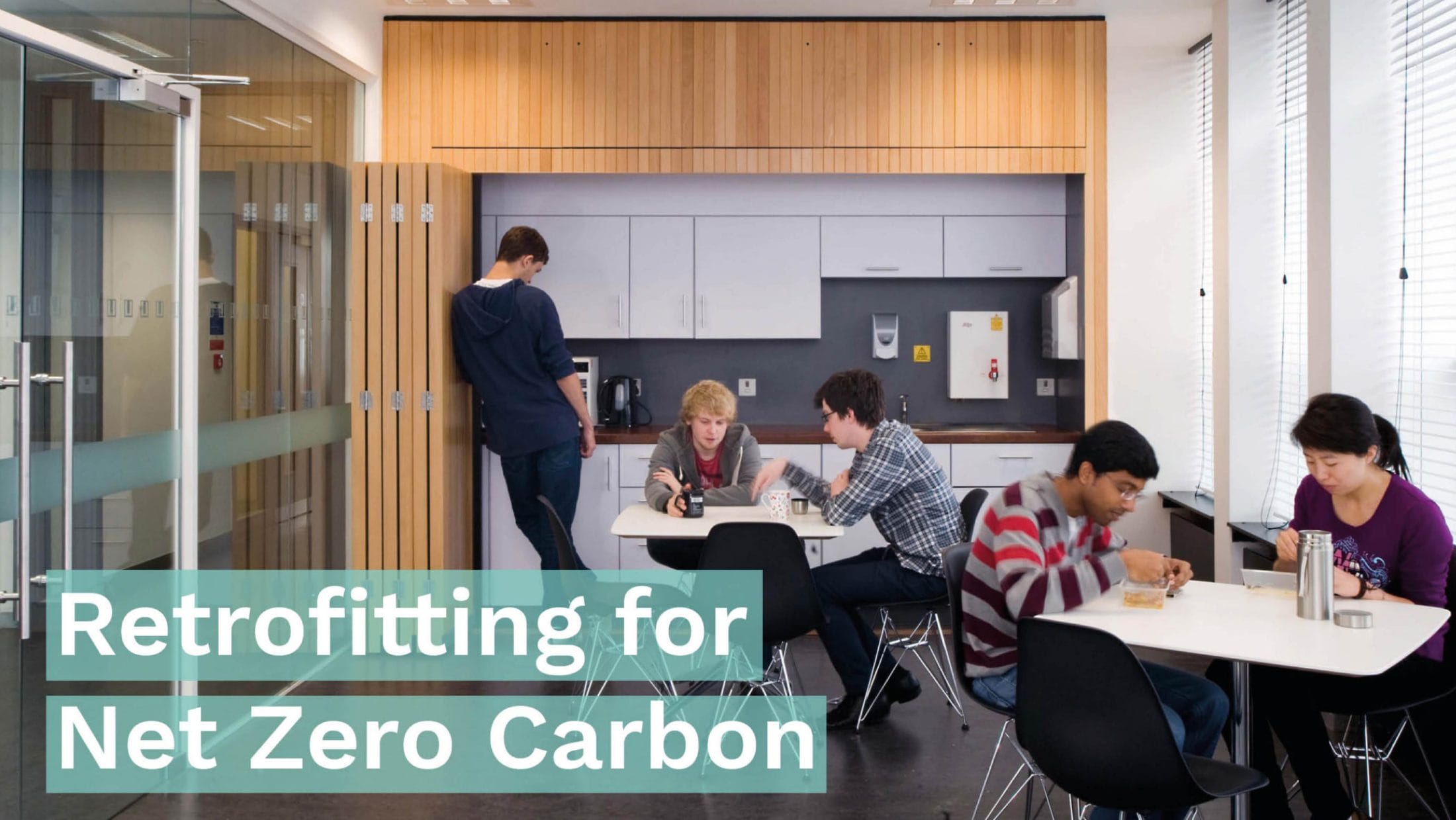
Education Buildings Wales’ recent roundtable event was facilitated by Gareth Woodfin, HLM’s Cardiff Studio Director. The roundtable focussed on the importance of considering pre-existing buildings and structures in developments, and why a ‘retrofit first’ approach should become the adopted strategy across the architectural profession. The discussion included industry professionals from ISG, Welsh County Councils and University College London among others.
By changing the initial approach to architectural projects across the industry, can we achieve zero carbon through retrofitting the buildings and structures that we already have in place?
The Welsh Government has committed to achieving a net zero Wales by 2050. As the first government in the world to declare a climate emergency, they are taking steps to recognise and act on the fundamental issues which will affect us reaching this target. 50,000 demolished buildings annually throughout the UK amount to almost 120,000 tonnes of waste, and the construction industry is responsible for an estimated 20% of the UK’s annual carbon emissions. By changing the initial approach to architectural projects across the industry, can we achieve zero carbon through retrofitting the buildings and structures that we already have in place?
As with all approaches to design and delivery, retrofitting existing buildings and structures is not without its limitations, however we need to consider the opportunities presented by reclaiming buildings first of all. The shell of a building typically provides half of the embodied carbon within a structure; by reusing an existing build, this value is immediately saved.
Older schools, specifically Victorian, were built in an era with a very different approach to the provision of power, heating and lighting. The result of this is that the structures were designed to optimise external power and heat sources, with high ceilings and windows providing well-lit environments with good ventilation. While the methods of teaching and learning have developed since many buildings’ conception, these fundamental comforts are still relevant to a supportive learning environment.
Repurposing existing structures is key to enabling a retrofitting culture; empty spaces in town centres can become learning hubs, University campuses can extend into surrounding buildings, and the high streets can become vibrant again, albeit with mixed and enhanced purposes. Not only, then, do we face a reduction in carbon through building, carbon emissions through travel will also reduce.
HLM have worked with universities and other organisations to undertake rigorous assessment of existing facilities and estates, to understand their use and potential. Coupled with whole life cycle modelling for different interventions and improvements, we are then better placed to inform our clients to the benefits of refurbishment over new buildings. This can result in reduced operational costs and energy use, lower carbon emissions and a more efficient estate footprint.
Throughout the discussion, attendees of the roundtable event acknowledged the lack of support and incentives for retrofitting initiatives. While the Welsh Government have the 21st Century New Build Funding in place, there is no comparative funding for the retrofitting of existing buildings. Additionally, new build departments typically receive the majority share of funding, with retrofitting seen as the lesser option for developments. Suggestions included a financial incentive of mandatory payments per tonne of carbon included in design (as modelled by London’s Energy Assessment Guidance), and a reduction or abolishment of taxation on refurbishment projects.
We are all familiar with the phrase, ‘If it ain’t broke, don’t fix it’. Why, then, have we been so accepting that such a large volume of structurally sound and historically significant, buildings with great amounts of carbon embodied within them, in order to make space for newer structures? Building new in this scenario contradicts the targets that we have given ourselves to achieve a sustainable future; we need to celebrate and reclaim what we have where possible, and make retrofitting the new norm.


